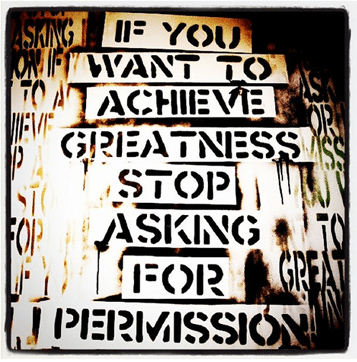How OHS people can maintain their motivation
Classic post by the late George Robotham
 In my 38 years involvement in OHS I have been lied to by various people, have lost count of the number of times I have been called an idiot or worse, have had promises made that were never fulfilled, dealt with idiots and generally made no progress despite having well reasoned arguments.
In my 38 years involvement in OHS I have been lied to by various people, have lost count of the number of times I have been called an idiot or worse, have had promises made that were never fulfilled, dealt with idiots and generally made no progress despite having well reasoned arguments.
I have come to realise sometimes it is the relationships you build, not your technical skills, that determines success.
The above is frustrating but when I critically reflect on some of the things I tried to do as a safety person I have to recognise some of the things I tried to do were not all that smart. The paper The Good, Bad and the Ugly of George’s 38 Year Safety Career. Available Here
My mentor, Geoff McDonald, refers to displacement activities, a displacement activity is something we do, something we put a lot of energy into but which there is little logical reason for doing it. I have no doubt some of the things OHS people traditionally do are displacement activities, this affects how we are perceived.OHS people have a tendency to pick up and run with the latest safety fads without carefully analysing the evidence for its introduction. People embrace emotionally appealing initiatives without a solid basis.
OHS people want stakeholders to do something different from the current situation. OHS is inherently about management of organisational change. Very few OHS people have skills in management of organisational change so it is no surprise they struggle.
One supervisor I used to deal with said I never had good news. He said I always made his life difficult because I wanted him to do extra. One super indent said I was like a mongrel terrier dog, I used to chew on his ear to get things done, he said he used to do what I wanted sometimes because I was right but sometimes just to get rid of me.
OHS people need skills in safety leadership, many are lacking in this area. Personally I have doubts tertiary OHS education prepares people well for what can be a very demanding task.
How I keep my safety motivation at a high level
- I have resolved to being a lifelong learner on safety and safety relevant topics.
- I read widely on safety and safety relevant topics.
- I have developed formal and informal networks of OHS people and we regularly correspond. Interacting with fellow OHS people is a great way to learn and you can share success and failures.
- Every now and again I have a win, not as often as I would like but that recharges my batteries.
- I find the Linkedin OHS forums of value.
- I thank others for their input and celebrate success.
- I find the hs-canada forum of value.
- I am a member of a private OHS forum with about 50 members, some very experienced safety people.
- Through my network I get a healthy supply of safety and non-safety joke e-mails, a bit of a laugh even though some would not be suitable in polite society.
- I have completed OHS, Management of Organisational Change and Adult & Workplace Education tertiary education.
- This blog www.safetyrisk.com.au is an excellent source of information – try the search box
- I write about OHS for an internet blog, I find that forces me to think about OHS.
- From my study of management of organisational change I have adopted the motto” When initiating change, remember people support what they create” Getting input from the stakeholders will give confidence about OHS changes you are trying to implement.
- It is not a good idea to take on a battle you have little chance of winning, having said that I get a lot of fun out of challenging the status quo. Sometimes you get in the poop but it is better than putting up with fools and mediocrity.
- It is a good idea to deal with the issue not the person
- When I was younger I used to let safety issues get very personal to me. Whilst I am still committed to safety I now find an overly personal approach can prevent effective change. There was a time my safety work took precedence over my family, big mistake
- I try to get variety in what I do and seek out the hard jobs
- Anything I do I put a lot of thought and planning into, if it does not work I try to identify lessons learnt and reconcile myself that I gave it my best shot.
photo credit: billsoPHOTO via photopin cc



Do you have any thoughts? Please share them below